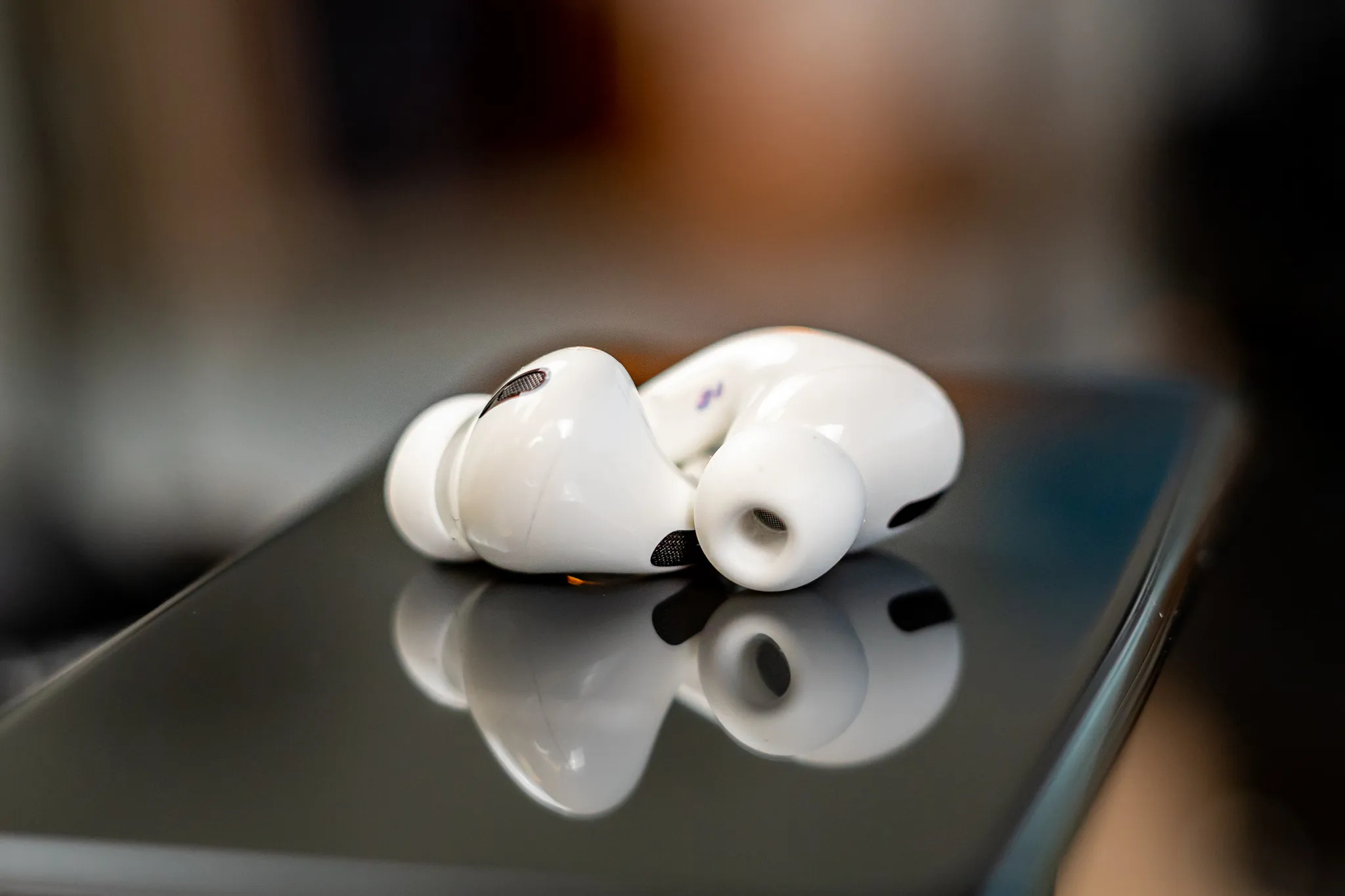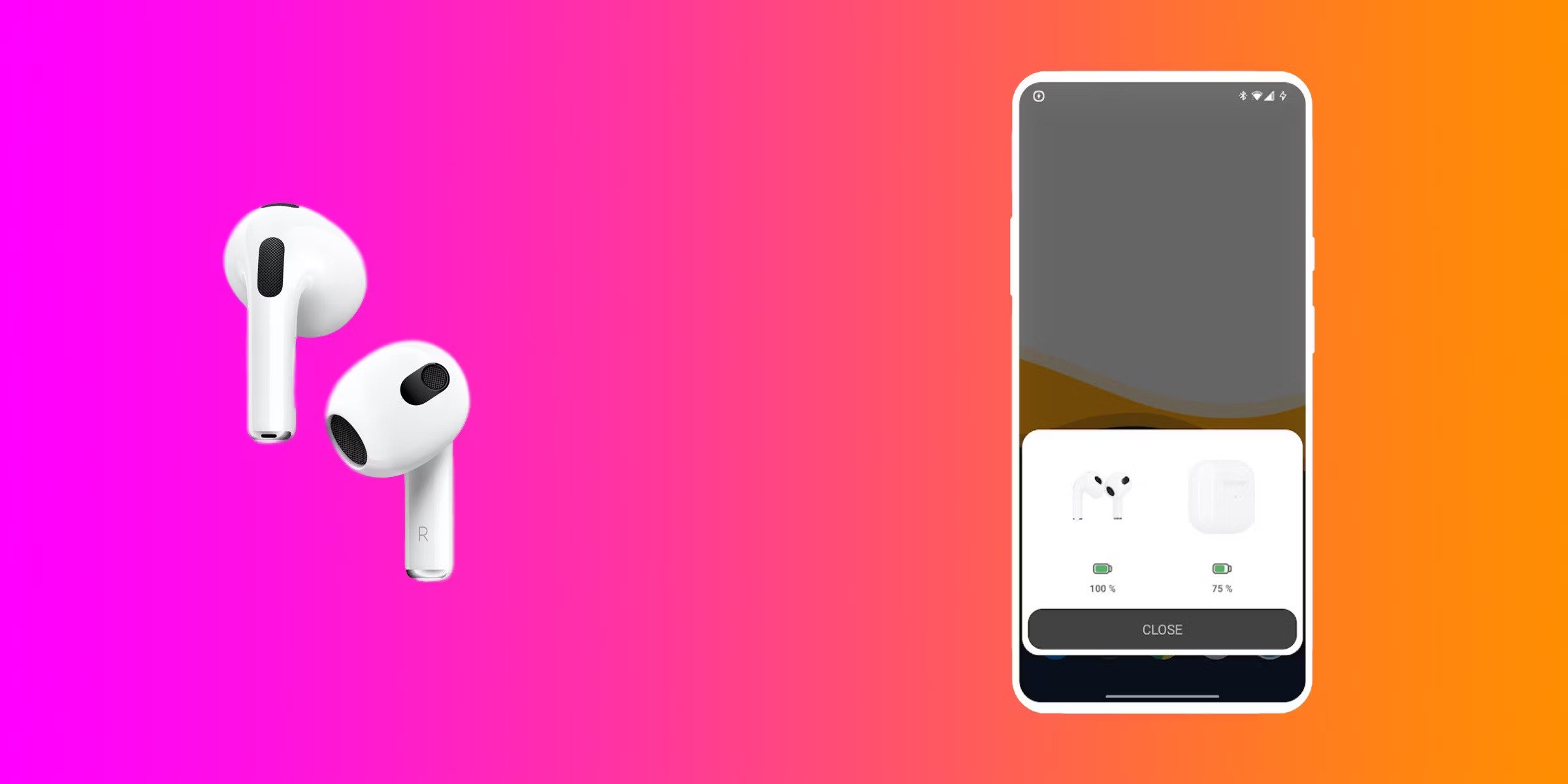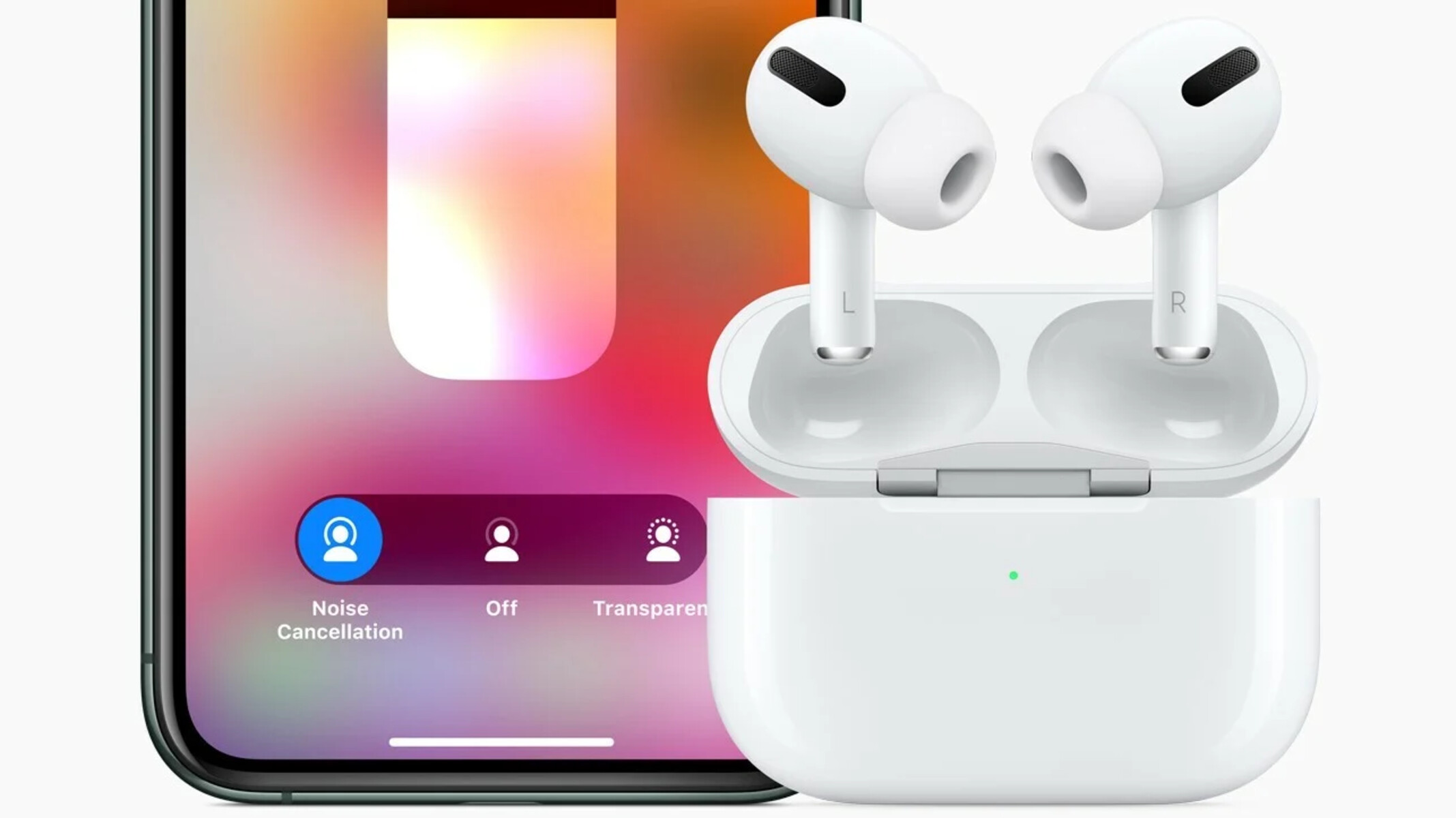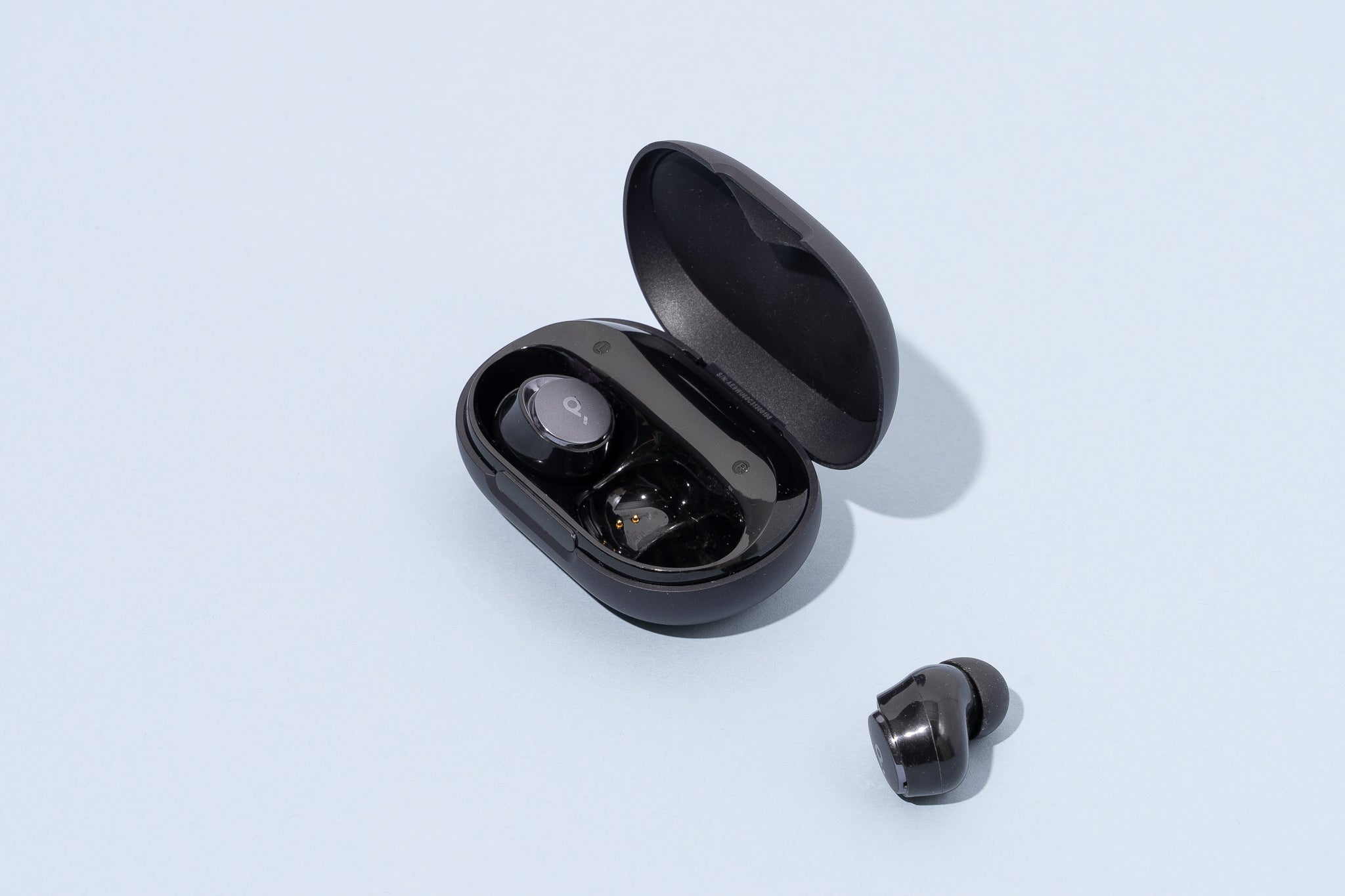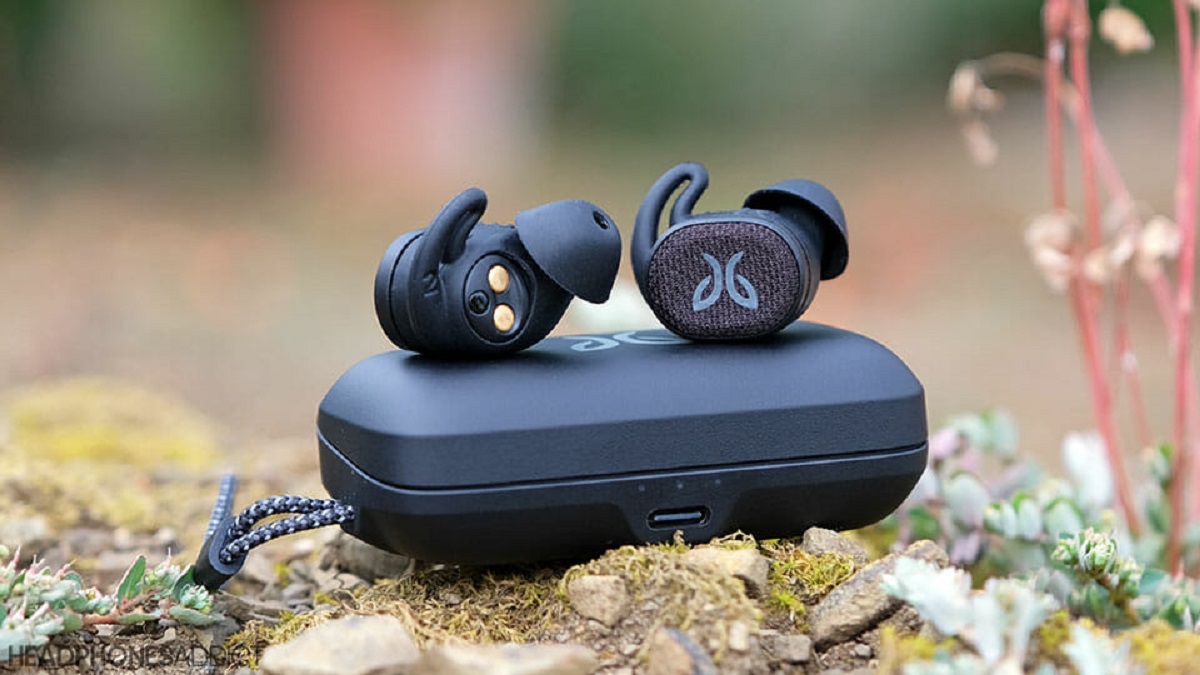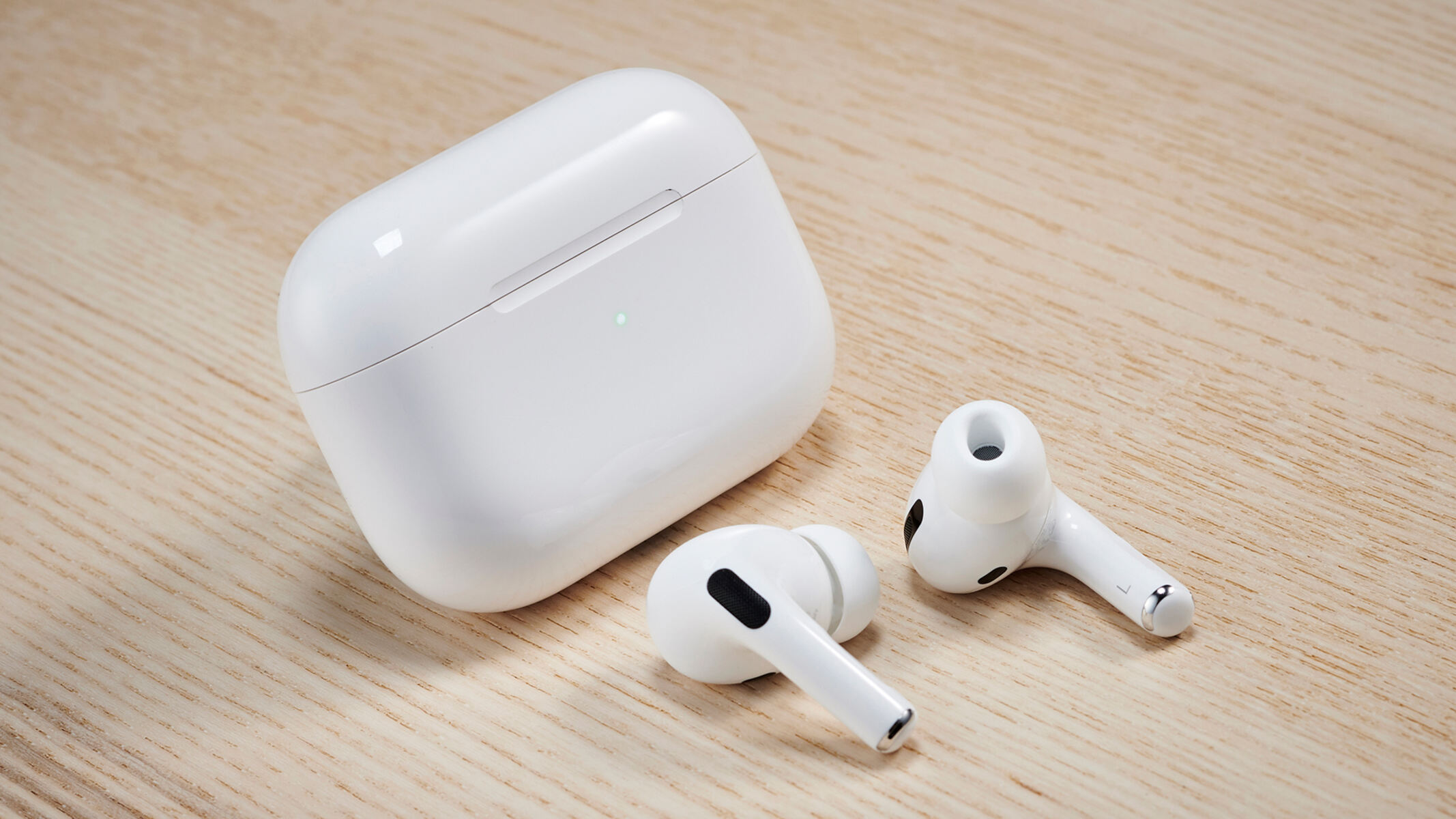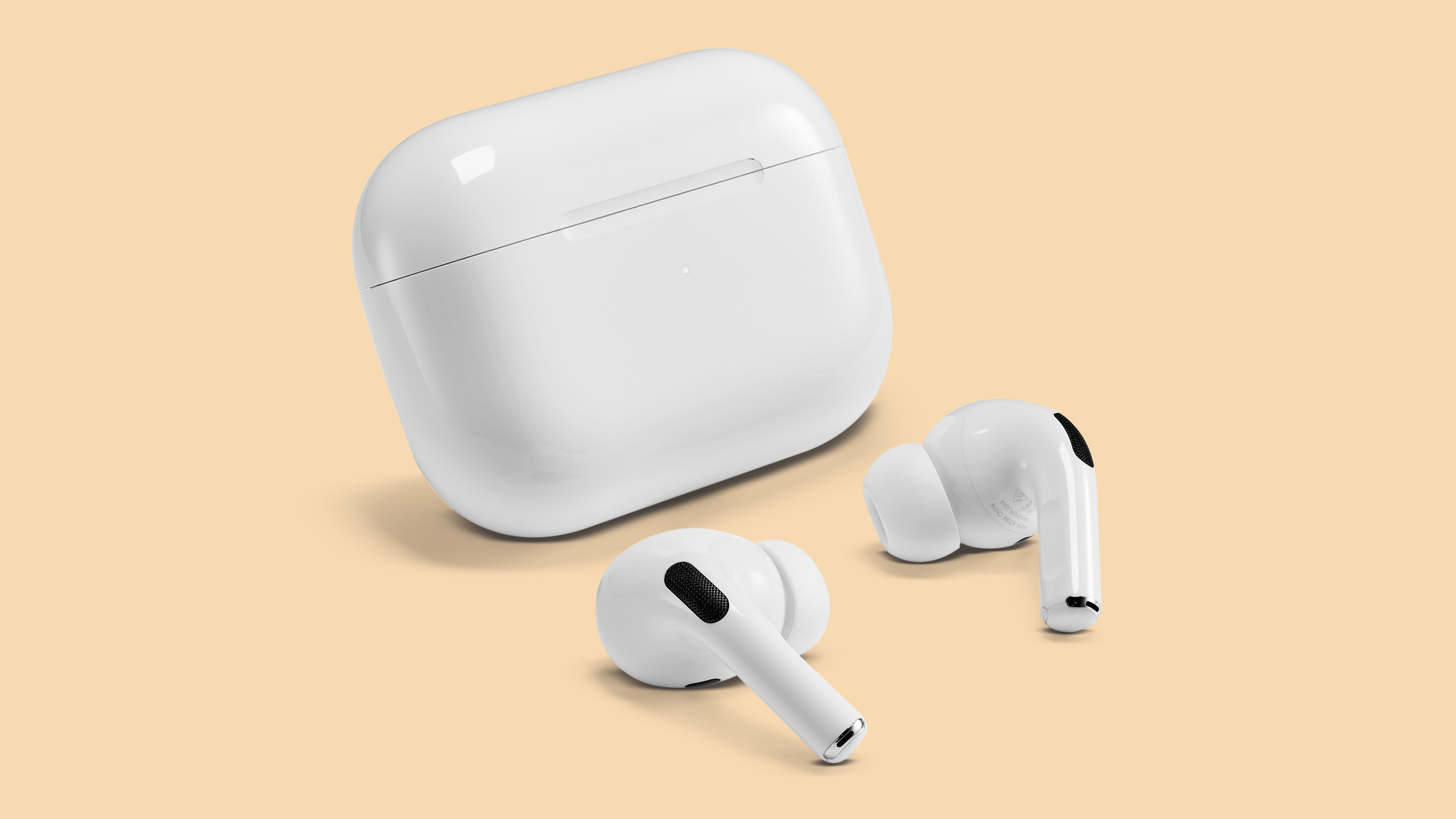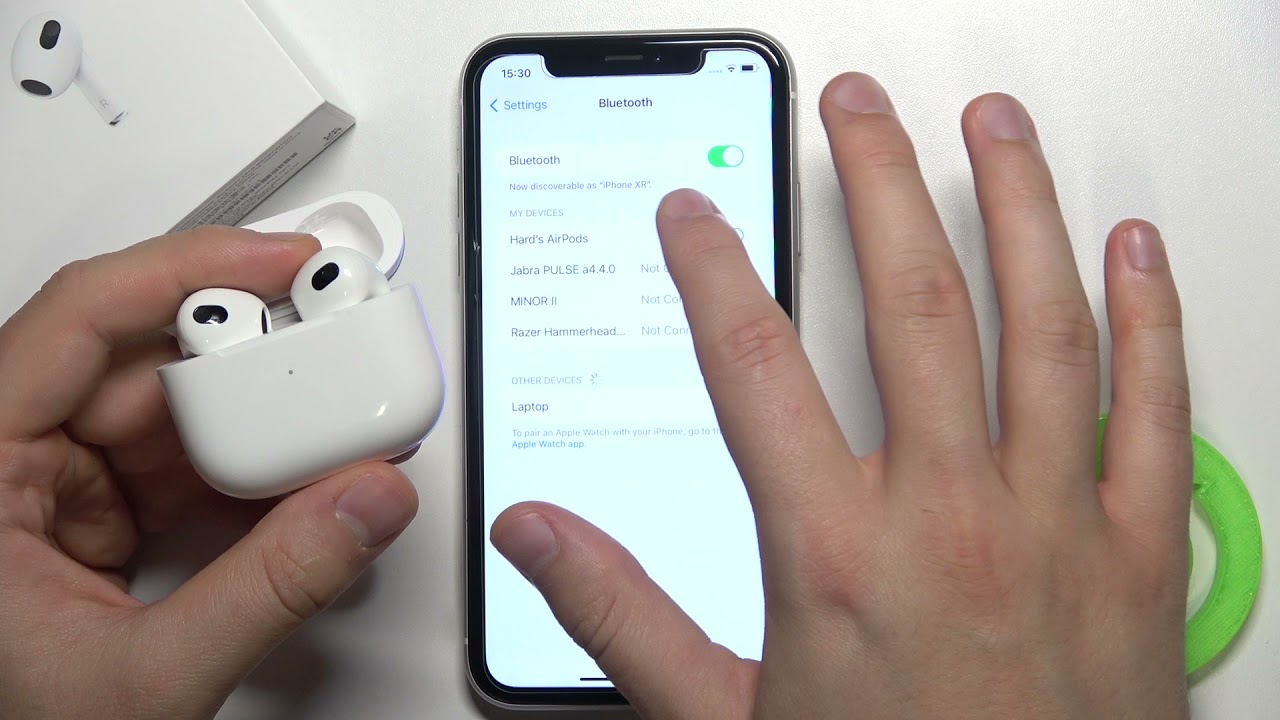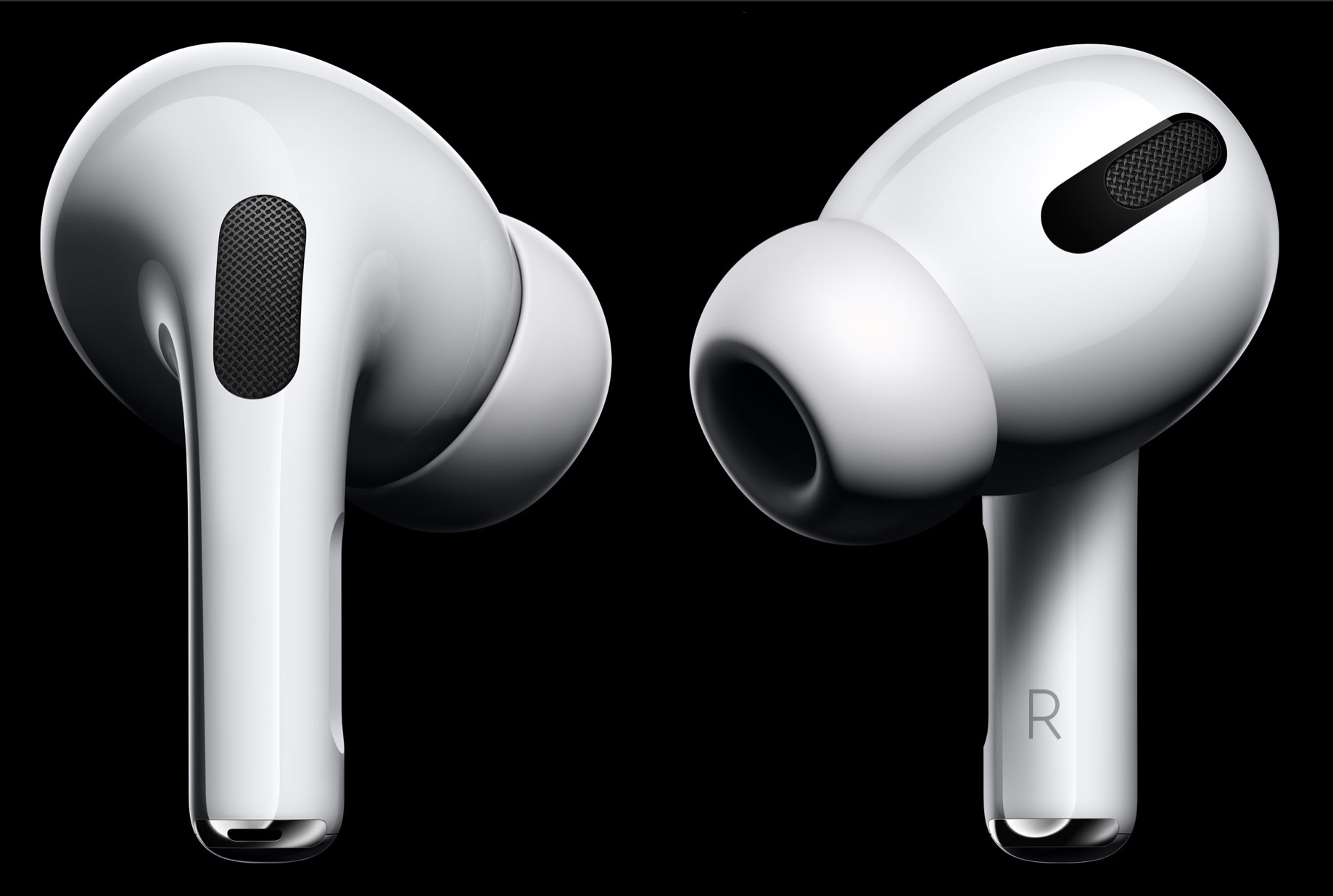Introduction
Noise cancellation technology has revolutionized the way we enjoy audio in our daily lives. Whether it’s canceling out the noise during a commute, immersing ourselves in music, or simply finding some peace and quiet in a busy environment, noise cancellation has become an essential feature for many audio enthusiasts. One popular product that incorporates this technology is the Airpods Pro.
Designed by Apple, the Airpods Pro are wireless earbuds that offer an impressive range of features, including active noise cancellation. But have you ever wondered how effective the noise cancellation is on these tiny earbuds? How many decibels of noise are actually canceled out?
In this article, we will delve into the realm of noise cancellation and uncover the intricate workings of the Airpods Pro noise cancellation feature. We will explore the different levels of noise cancellation, understand how noise cancellation works, and determine just how many decibels of noise the Airpods Pro can effectively cancel out. So, put on your Airpods Pro and prepare to dive into the world of noise cancellation technology!
What is Noise Cancellation?
Noise cancellation is a technology that aims to reduce unwanted sounds from the environment, allowing the user to enjoy their audio content without disturbances. It works by using microphones to capture external sounds, analyzing their frequency and amplitude, and generating an opposite sound wave to cancel out the original noise. This process is designed to create a quieter and more immersive audio experience.
There are two types of noise cancellation: active noise cancellation (ANC) and passive noise cancellation. While passive noise cancellation relies on physical barriers and materials to block out external noise, active noise cancellation takes a more advanced approach. It actively counters the environmental noise by producing sound waves that are out of phase with the original sounds, effectively canceling them out.
The Airpods Pro utilize active noise cancellation technology, which means they actively analyze and counteract external noise to provide a more immersive listening experience. This is achieved through a combination of advanced software and hardware components built into the earbuds.
Now that we have a basic understanding of noise cancellation, let’s take a closer look at how it works in the Airpods Pro and the different levels of noise cancellation they offer.
How Does Noise Cancellation Work in Airpods Pro?
The Airpods Pro employ an innovative system to provide effective noise cancellation. The technology behind this feature involves both hardware and software components working together seamlessly.
Firstly, the Airpods Pro are equipped with dual microphones. One microphone is outward-facing and detects external sound, while the other is inward-facing and monitors the sound inside your ear. These microphones work in conjunction to capture both the unwanted environmental noise and the sound that reaches your ear.
The captured external sound is then processed by Apple’s proprietary software algorithms in real-time. These algorithms generate an equal but opposite sound wave, commonly referred to as “anti-noise,” which is then played through the Airpods Pro speakers. By doing so, the anti-noise effectively cancels out the external noise, minimizing its impact on your listening experience.
Additionally, the Airpods Pro utilize a feature called Adaptive EQ, which automatically tunes the audio frequencies based on the shape of your ear. This ensures a consistent and balanced sound profile, even with the noise cancellation activated.
Furthermore, the Airpods Pro take noise cancellation a step further with the inclusion of a transparency mode. This mode allows you to selectively let in outside sound when needed, such as when you want to be aware of your surroundings or have a conversation without removing the earbuds. It utilizes the microphones to amplify and deliver external sounds to your ears while still maintaining a comfortable listening experience.
Overall, the synergy between the dual microphones, advanced software algorithms, Adaptive EQ, and transparency mode in the Airpods Pro enables effective and adaptable noise cancellation, giving you the flexibility to enjoy your audio content in various environments.
The Different Levels of Noise Cancellation
The Airpods Pro offer users the ability to adjust the level of noise cancellation according to their preference and the environment they are in. This is achieved through the implementation of three distinct modes: Active Noise Cancellation, Transparency mode, and Off mode.
1. Active Noise Cancellation: This mode is designed to provide the maximum level of noise cancellation. It actively analyzes and counters external noise, allowing you to fully immerse yourself in your audio without distractions. The Airpods Pro utilize their advanced hardware and software components to generate anti-noise and effectively cancel out the unwanted sounds. This mode is ideal for noisy environments such as crowded cafes, public transportation, or office spaces.
2. Transparency mode: Transparency mode is the opposite of active noise cancellation. Instead of blocking out external noise, this mode allows certain sounds to pass through the Airpods Pro, providing a level of awareness of your surroundings. This is especially useful when you need to hear important announcements, have a conversation, or remain alert to your environment. Transparency mode utilizes the microphones to capture and amplify external sounds, creating a more natural listening experience.
3. Off mode: In Off mode, noise cancellation is completely turned off. This mode is suitable for situations where noise cancellation is not necessary or when you want to conserve battery life. The Airpods Pro will still function as high-quality wireless earbuds, delivering a great audio experience without the added noise cancellation features.
Switching between these modes is simple. Users can use the control center on their Apple devices or the force touch sensor on the stem of the Airpods Pro to toggle between Active Noise Cancellation, Transparency mode, and Off mode.
Having these different levels of noise cancellation available provides users with the flexibility to customize their listening experience to suit their immediate needs. Whether it’s completely immersing themselves in their audio, being aware of their surroundings, or enjoying the simplicity of music without any noise cancellation, the Airpods Pro cater to a wide range of preferences and environments.
How Many dB of Noise Cancellation Do Airpods Pro Provide?
When it comes to measuring the amount of noise cancellation provided by the Airpods Pro, it is important to understand that noise cancellation technology does not completely eliminate all external sounds. Instead, it significantly reduces the intensity of certain frequencies to create a quieter listening environment.
Apple does not provide specific information on the exact decibel (dB) range of noise cancellation the Airpods Pro offer. The effectiveness of noise cancellation can vary depending on the specific frequency of the unwanted noise and the environment in which you are using the earbuds. Noise cancellation is particularly effective at reducing low-frequency sounds, such as the rumble of an engine or the drone of an air conditioner.
Although dB measurements are not disclosed, the general consensus among users and experts is that the Airpods Pro offer impressive noise cancellation capabilities. Many find that it effectively reduces background noise, enhancing the clarity of audio content and providing a more immersive experience.
It’s worth noting that noise cancellation technology is not a one-size-fits-all solution. Different individuals may experience noise cancellation differently based on factors such as ear shape, fit, and personal sensitivity to sound. Therefore, the perceived level of noise cancellation can vary from person to person.
To maximize the effectiveness of noise cancellation on the Airpods Pro, it is crucial to ensure a proper fit. The Airpods Pro come with silicone ear tips in three different sizes (small, medium, and large) to allow users to find the best fit for their ears. A secure and comfortable fit helps to create a tighter seal, effectively blocking out external noise and optimizing the noise cancellation capabilities of the earbuds.
While the exact dB measurement of noise cancellation provided by the Airpods Pro may not be specified, many users have praised its ability to minimize external noise and create a more enjoyable audio experience. The combination of advanced hardware, software algorithms, and a proper fit contributes to the overall effectiveness of noise cancellation on the Airpods Pro.
Understanding the Decibel Scale
When discussing noise cancellation and the dB (decibel) measurement, it is important to have a basic understanding of the decibel scale. The decibel is a logarithmic unit that is used to measure the intensity or level of sound.
The decibel scale is based on a ratio of sound pressure levels compared to a reference point. The reference point for the decibel scale is set at the threshold of human hearing, which is defined as 0 decibels (dB). As the sound level increases, the number of decibels also increases, indicating a higher intensity of sound.
To put things into perspective, let’s consider some common sound levels:
- 0 dB: The threshold of human hearing. This is equivalent to the quietest sound detectable by the average human ear.
- 30 dB: A quiet whisper or a library.
- 60 dB: Normal conversation or background noise in a restaurant.
- 90 dB: Heavy traffic or a lawnmower.
- 120 dB: A loud concert or a jet engine at close proximity.
- 150+ dB: Extreme noise levels, such as fireworks or explosions.
It is important to note that the decibel scale is logarithmic, meaning that every increase of 10 decibels represents a tenfold increase in sound intensity. For example, 20 dB is ten times louder than 10 dB, and 30 dB is ten times louder than 20 dB.
When it comes to noise cancellation, the goal is to reduce the overall decibel level of unwanted sounds. While it may not completely eliminate all noise, noise cancellation technology aims to significantly reduce the sound level and make the overall listening experience more enjoyable.
While the exact dB reduction provided by the Airpods Pro is not specified, it is important to understand that noise cancellation is not solely measured by the decibel scale. Various factors such as the frequency of the sound, the environment, and individual perception play a role in determining the effectiveness of noise cancellation.
With a basic understanding of the decibel scale, we can appreciate the impact of noise cancellation technology in reducing the presence of unwanted sounds and enhancing our audio experience.
The Effectiveness of Airpods Pro Noise Cancellation
The noise cancellation feature of the Airpods Pro has gained praise from users, but how effective is it in real-world scenarios? While the exact dB reduction is not disclosed by Apple, the overall consensus is that the Airpods Pro provide a noticeable reduction in external noise, enhancing the listening experience.
Many users have reported that the Airpods Pro effectively block out low-frequency noises such as the hum of engines or the rumble of trains and airplanes. With the active noise cancellation feature engaged, these background sounds are significantly diminished, allowing users to focus on their audio content without distractions.
When it comes to high-frequency sounds like voices or alarms, the noise cancellation feature may not be as effective, as these sounds tend to have shorter wavelengths that are more difficult to cancel out completely. However, the transparency mode can be utilized to allow these specific sounds to pass through, providing a balanced listening experience while still maintaining awareness of your surroundings.
The effectiveness of noise cancellation also greatly depends on the fit of the Airpods Pro in your ears. A secure and proper fit creates a seal that enhances noise isolation and improves noise cancellation performance. The Airpods Pro come with different sizes of silicone ear tips to ensure a customizable, snug fit for optimal noise cancellation results.
While the Airpods Pro may not provide the same level of noise isolation as over-ear or larger noise-canceling headphones, they offer a compact and portable solution with impressive noise cancellation capabilities for their size. This makes them a popular choice for on-the-go use and situations where carrying bulky headphones may not be convenient or desirable.
It’s important to keep in mind that noise cancellation technology is not perfect and may not completely eliminate all external sounds. However, the Airpods Pro strike a balance between reducing unwanted noise and delivering a high-quality audio experience.
Ultimately, the effectiveness of noise cancellation on the Airpods Pro will vary depending on individual preferences, the environment in which they are used, and the specific frequency range of the external noise. Nevertheless, the Airpods Pro noise cancellation feature continues to impress users with its ability to create a more immersive and enjoyable listening experience by minimizing background disturbances.
Factors that Affect Noise Cancellation Performance
While the Airpods Pro offer effective noise cancellation, the performance can be influenced by various factors. Understanding these factors can help optimize the noise cancellation experience.
Fit and Seal: The fit of the earbuds in your ears plays a crucial role in noise cancellation effectiveness. A secure and proper seal helps block external noise and enhances the overall performance of noise cancellation. The Airpods Pro come with different sizes of silicone ear tips to ensure a comfortable and customized fit for each individual.
Environment: The noise cancellation performance can vary depending on the environment. Noisy environments with consistent low-frequency sounds, such as airplane cabins or busy city streets, are generally more conducive to effective noise cancellation. However, sudden, high-frequency noises may still be noticeable.
Volume and Audio Content: The volume at which you play your audio content can affect the perceived effectiveness of noise cancellation. Higher volumes can mask external noise and enhance the immersive experience. Additionally, certain types of audio content, such as music with a wide frequency range, may provide better noise masking compared to spoken content or podcasts.
Ear Shape and Sensitivity: Individual differences in ear shape and sensitivity to sound can influence how effective noise cancellation is experienced. Factors such as ear canal shape, depth, and personal sensitivity to specific frequencies can impact how well the Airpods Pro fit and how effectively they cancel out certain frequencies of external noise.
Ambient Noise: The level of ambient noise in your surroundings can affect the perceived effectiveness of noise cancellation. For example, noise cancellation may be more noticeable in quieter environments, while it may not be as apparent in extremely loud environments where the overall noise levels are already high.
Battery Level: The battery level of the Airpods Pro can influence noise cancellation performance. It is recommended to use the Airpods Pro with sufficient battery life for optimal noise cancellation capabilities. Low battery levels may affect the performance of noise cancellation and transparency mode.
While these factors may impact the noise cancellation experience, the Airpods Pro prioritize combining hardware, software algorithms, and a proper fit to deliver an effective and enjoyable noise cancellation feature. By considering these factors and maximizing the factors under your control, you can enhance the overall noise cancellation performance of the Airpods Pro.
Comparisons with other Noise-Canceling Headphones
When it comes to noise-canceling headphones, the Airpods Pro are often compared to other popular options in the market. Let’s explore how they stack up against some of their competitors.
Sony WH-1000XM4: The Sony WH-1000XM4 is highly regarded for its exceptional noise cancellation capabilities. It is known for its ability to block out a wide range of frequencies and provide a highly immersive audio experience. While the Airpods Pro offer impressive noise cancellation for their size, the Sony WH-1000XM4 generally outperforms them in terms of overall noise reduction.
Bose QuietComfort 35 II: Another popular competitor in the noise-canceling headphone market is the Bose QuietComfort 35 II. Bose is renowned for its long-standing expertise in noise cancellation technology, and the QuietComfort 35 II lives up to its reputation. It provides excellent noise reduction, particularly in low-frequency ranges. While the Airpods Pro offer respectable noise cancellation performance, the Bose QuietComfort 35 II tends to be superior in terms of overall noise isolation.
Jabra Elite 85h: The Jabra Elite 85h is known for its impressive active noise cancellation capabilities. It excels in canceling out background noise in various environments, delivering a clear and immersive audio experience. While the Airpods Pro offer effective noise cancellation, the Jabra Elite 85h is generally considered to provide a more comprehensive noise reduction experience.
Sennheiser Momentum 3 Wireless: Sennheiser is renowned for its audio quality, and the Momentum 3 Wireless headphones incorporate noise cancellation as well. They offer a balanced and natural sound profile along with respectable noise cancellation capabilities. Though the Airpods Pro deliver a great audio experience and effective noise cancellation for their size, the Sennheiser Momentum 3 Wireless generally provides a more refined audio performance overall.
While the Airpods Pro may not always outperform their competitors in terms of raw noise cancellation, they offer a unique combination of portability, convenience, and integration with Apple devices. The seamless integration with Apple products and the convenience of the compact and wireless design make them particularly appealing for Apple users.
Ultimately, the choice between noise-canceling headphones depends on individual preferences, priorities, and budget. It is recommended to consider factors such as noise cancellation performance, audio quality, comfort, connectivity options, and features when making a purchase decision.
It’s worth noting that advancements in noise cancellation technology are constantly being made, so it’s always a good idea to research and compare the latest models to find the best fit for your specific needs.
Conclusion
The Airpods Pro deliver impressive noise cancellation capabilities within their compact and portable design. Through the utilization of advanced hardware, software algorithms, and a proper fit, they effectively reduce external noise and enhance the audio experience for users.
While the exact decibel reduction provided by the Airpods Pro is not disclosed, users have praised their ability to block out low-frequency background noises such as the hum of engines or the rumble of public transport. The transparency mode also allows for selective awareness of ambient sounds when necessary.
Factors such as fit and seal, environment, volume, ear shape, and ambient noise can impact the overall noise cancellation performance. By considering these factors and optimizing the factors under your control, you can maximize the noise cancellation capabilities of the Airpods Pro.
When compared to other noise-canceling headphones, the Airpods Pro may not always be the top performer in terms of overall noise reduction. However, they offer a unique balance of convenience, portability, and seamless integration with Apple devices, appealing to Apple users who prioritize these aspects.
Ultimately, the Airpods Pro provide an enjoyable and immersive listening experience by minimizing background disturbances. Their noise cancellation feature, combined with the transparency mode and personalized fit, empowers users to tailor their listening experience to suit their preferences and environments.
As technology continues to evolve, noise cancellation capabilities are likely to improve further. It’s always worth exploring the latest models and comparing features to find the best noise-canceling solution that meets your specific needs and preferences. Whether it’s immersing yourself in music during a busy commute or finding serenity in a bustling coffee shop, the Airpods Pro are a solid choice for those seeking a high-quality audio experience with effective noise cancellation.







